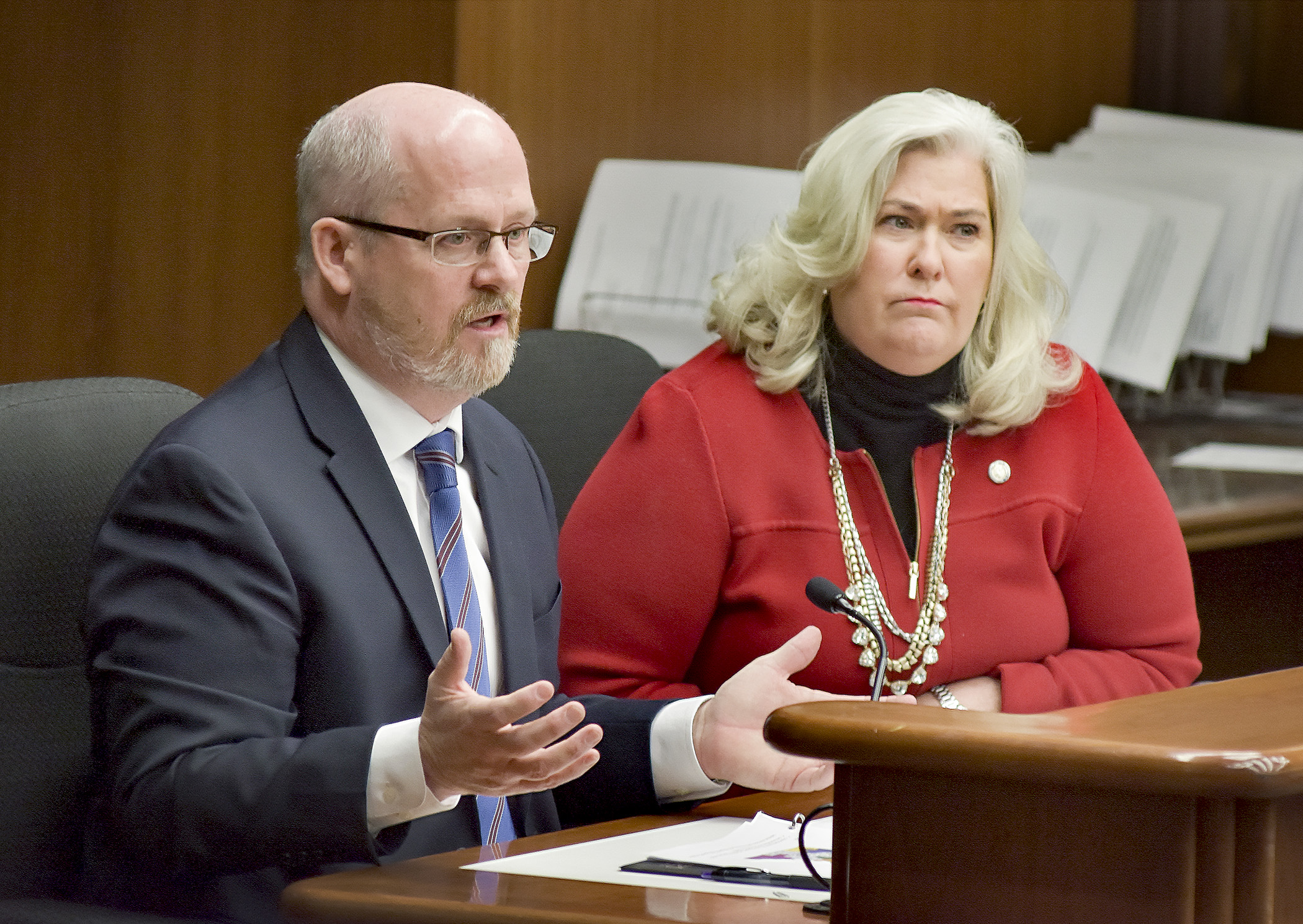A place to turn in times of crisis just a call — or text — away
In 2014, 683 Minnesotans committed suicide, making it the eighth-leading cause of death in the state, according to a 2016 report by the Department of Health.
Minnesota’s suicide prevention plan, released in 2015, aims to reduce that amount 10 percent by 2020 and 20 percent by 2025.
One way to support that goal is to ensure that people always have someone to talk to when coping with suicidal thoughts or a mental health crisis, said Rep. Kelly Fenton (R-Woodbury).
HF501, sponsored by Fenton, would appropriate $2.04 million in Fiscal Year 2018 to fund a Department of Human Services grant that would allow Canvas Health to stabilize and expand access to suicide prevention programs that give immediate support to people through phone calls or text messages.
 Matthew Eastwood, chief executive officer at Canvas Health, testifies before the House Health and Human Services Reform Committee Jan. 31 in support of a bill sponsored by Rep. Kelly Fenton, right, that would provide funding for a voice response suicide prevention program. Photo by Andrew VonBank
Matthew Eastwood, chief executive officer at Canvas Health, testifies before the House Health and Human Services Reform Committee Jan. 31 in support of a bill sponsored by Rep. Kelly Fenton, right, that would provide funding for a voice response suicide prevention program. Photo by Andrew VonBankApproved Tuesday by the House Health and Human Services Reform Committee, it was sent to the House Health and Human Services Finance Committee. It has no Senate companion.
“The mission (is) to create a place in which no one in crisis will ever be alone” said Canvas Health CEO Matthew Eastwood. “We know these deaths can be prevented, we know that intervention works, we know that treatment works. We can help solve that problem.”
In 2016, the program responded to almost 36,000 phone calls and 11,000 text exchanges and made more than 28,000 referrals to mobile crisis teams or community-based health services. But current funding is not sufficient to sustain the work, Eastwood said.
WATCH House Health and Human Services Reform Committee discussion of the bill
Additional funding would allow the program to handle an increased call volume and add enough regional coordinators to provide education and outreach throughout the state, especially in schools, Eastwood said.
“We’ve lost quite a few people, young people, 12 being the youngest,” testified Lori Nelson, a chemical dependency worker with the Lower Sioux Indian Community. “So, whatever kind of tools that we can help to have our children stay with us is very important, as a tribal nation.”
Rep. Liz Olson (DFL-Duluth) noted that Canvas Health and its Crisis Connection and TXT4Life programs are not specifically named. Eastwood said that while there are other organizations that provide hotline and text-response services, TXT4Life is the largest program of its kind in the state.
Related Articles
Search Session Daily
Advanced Search OptionsPriority Dailies
Ways and Means Committee OKs proposed $512 million supplemental budget on party-line vote
By Mike Cook Meeting more needs or fiscal irresponsibility is one way to sum up the differences among the two parties on a supplemental spending package a year after a $72 billion state budg...
Meeting more needs or fiscal irresponsibility is one way to sum up the differences among the two parties on a supplemental spending package a year after a $72 billion state budg...
Minnesota’s projected budget surplus balloons to $3.7 billion, but fiscal pressure still looms
By Rob Hubbard Just as Minnesota has experienced a warmer winter than usual, so has the state’s budget outlook warmed over the past few months.
On Thursday, Minnesota Management and Budget...
Just as Minnesota has experienced a warmer winter than usual, so has the state’s budget outlook warmed over the past few months.
On Thursday, Minnesota Management and Budget...